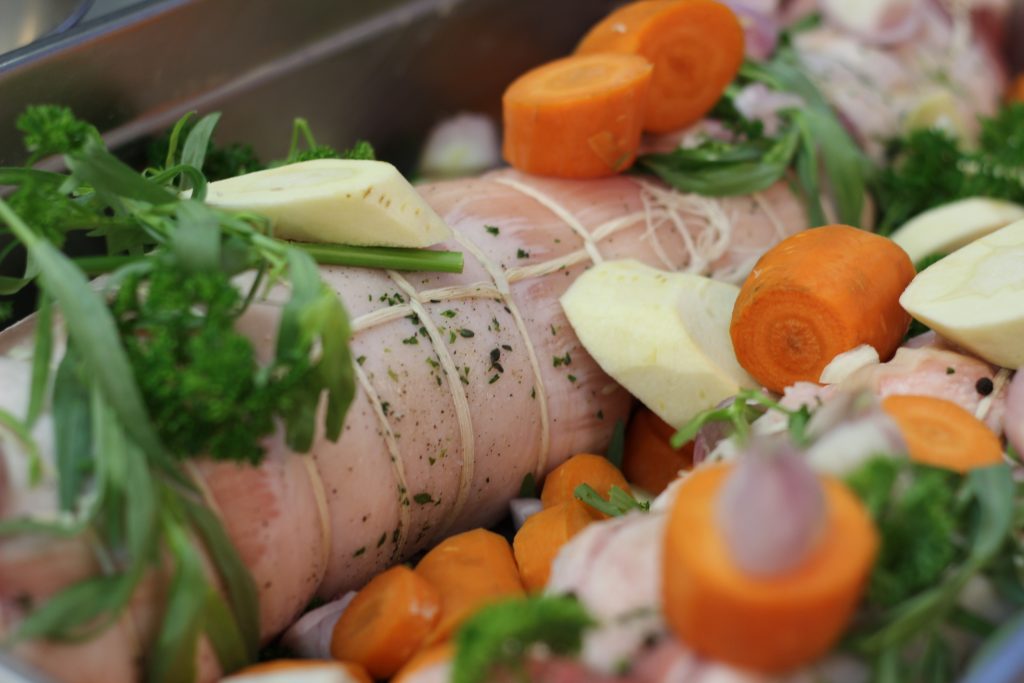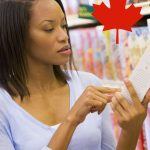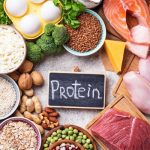
Herbs and spices are both tasty ingredients for seasoning food. Both come from plants, but where they come from on the plant is what makes them different.
Herbs – The green leafy parts of plants. Herbs can be used fresh, dried, chopped or whole. Some examples are parsley, dill, rosemary, basil, oregano and cilantro.
Spices – The aromatic parts of plants that come from the root, stem, seed, fruit, flower or bark of plants. Some spices, like garlic and ginger, can be used fresh, but most are used dried either whole or ground. Examples are cinnamon, black pepper, allspice and cumin.
Did you know that salt is not a spice? It’s one of the most popular ways to season food but it does not come from a plant. It is a mineral. It is the only type of rock that humans eat.
How to Store Herbs and Spices
To keep herbs and spices as fresh as possible, for as long as possible, protect them from moisture, light, air and temperature changes.
Fresh Herbs
- Wash herbs with cold water and dry very well.
- Place herbs in a single layer on a slightly damp cloth or paper towel.
- Roll up and place in a plastic bag in the fridge, but do not seal the bag. A little airflow is good.
- Check herbs regularly. If they begin to wilt, add a little water to the towel. If they begin to get soggy or slimy, remove any spoiled pieces and replace the towel with a dry one.
- If you can not use all your fresh herbs within 7-10 days, chop and freeze them. Fresh chopped frozen herbs will keep for 3 to 6 months in the freezer.
Dried Herbs & Spices
- Whole spices will keep their flavour for 2 to 3 years.
- Dried herbs, seasoning blends and ground spices are best if used within 1 year.
- If possible, buy whole herbs and spices and do not crush or grind them until ready to use.
- Buy just enough dried herbs and spices to refill your spice container. Look for them in the bulk section of grocery stores.
- Store away from heat, preferably not next to the stove. If this is your only option, split your spices and keep only a small container next to the stove. Keep the remainder of the spices in a cool, dry, dark space or in the freezer.
- Ideally store in a dark cupboard or use dark storage containers that don’t allow light through.
- Clean out and check your spice cupboard at least once a year.
Ten Tips for Cooking with Herbs and Spices
- Save Money – Look for herbs and spices in the bulk section or the ethnic food aisles. They are often less expensive than the brands found in the spice aisle.
- Try New Flavours – Experiment with a new herb or spice, and you might discover a new favourite. Look in the bulk section and buy a small amount to try.
- Make it Yourself – Make your own spice blends. It’s often more affordable and you can control the ingredients to improve flavour and limit salt added. Check out these three Favorite Seasoning Blends: Taco seasoning, Italian seasoning, and Cajun seasoning from home economist, Getty Stewart.
- Time it Right – Add herbs and spices at the right time during cooking for best flavour.
- Dried herbs and spices can be added early to give them time to soften and release their flavours. Crush dried herbs between your fingers before adding to a dish to help release their flavour.
- Fresh herbs like thyme, rosemary, sage, marjoram, bay leaves and oregano can also be added early in the cooking process for maximum flavour.
- Tender fresh herbs like basil, cilantro, parsley, chives and dill are best when added in the last few minutes of cooking or just before serving. They don’t hold up well if they get too much heat.
- Taste and Adjust – Recipes offer great suggestions for how much herbs and spices to add but let your taste buds be the final judge. Taste your dish and season it as much or as little as you like. If a herb or spice is new to you, add half the amount to start, taste test and add more as you like.
- Add with Care – Prevent moisture from getting into your dried spice container by not sprinkling directly from the container into a steamy, hot pot. Spoon out the correct amount over the counter, away from the steam and then add it to the pot.
- Maximize Flavour – Boost the flavour of dried herbs by crushing or rubbing them in your hands before adding to food. Add dried herbs and powdered spices to the pot after sautéing onions and garlic but before adding any sauce. Toast for 1 minute until you can smell the herbs to maximize flavour, then add liquids. Toast whole spices in a dry medium-high pan for 2-3 minutes or until they pop, turn brown and become fragrant. Use these spices whole or crush them and add to your cooking.
- Scale up Recipes Carefully – If you are doubling a recipe, don’t just double all herbs and spices. Start with adding an extra quarter or half the original amount and adjust by taste, especially for strong flavoured herbs and spices like sage, lovage, cayenne pepper, cloves, garlic, etc.
- Use Dried or Fresh – In most recipes you can use dried or fresh herbs. Remember, dried herbs are stronger than fresh herbs, so use three to four times more fresh herbs than dried. A good rule of thumb is 1 Tablespoon (15 mL) fresh herbs = 1 tsp (5 mL) of dried herbs.
- Try a Substitute – If you are missing a herb or spice listed in a recipe, try one of these common Spice Substitutes. The flavour will not be identical, but it will have a similar profile.
For more information on growing, storing and cooking with herb and spices, read the following information:
How to Cook with Spices from the Dietitians of Canada
Herb Growing Chart for Prairie Gardens from home economist Getty Stewart. GettyStewart.com also provides information on harvesting and preserving many types of herbs grown in Manitoba.
Read these articles next:
Grow Your Own Food
What’s in Season on the Prairies






